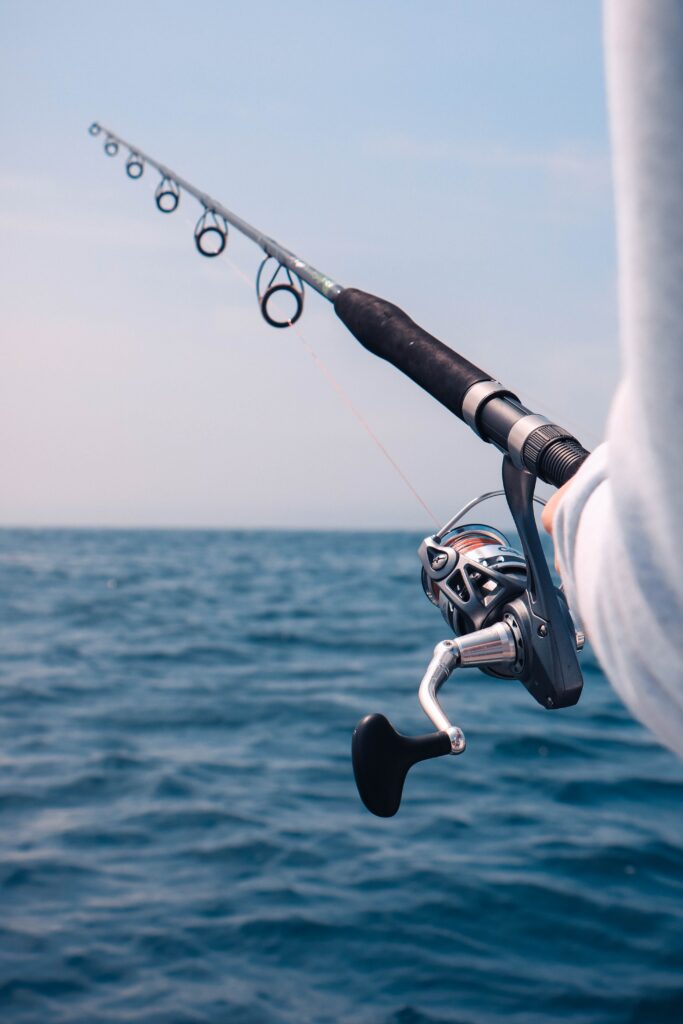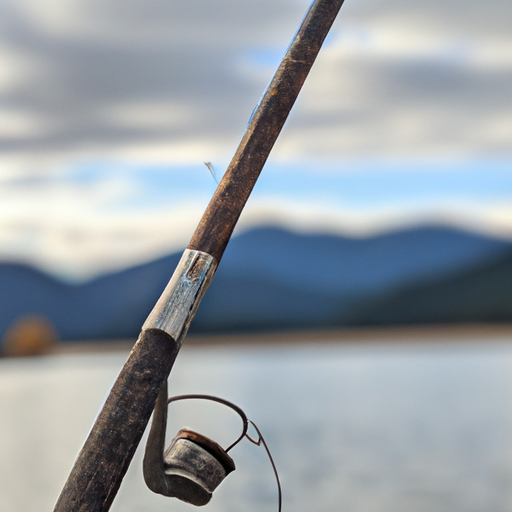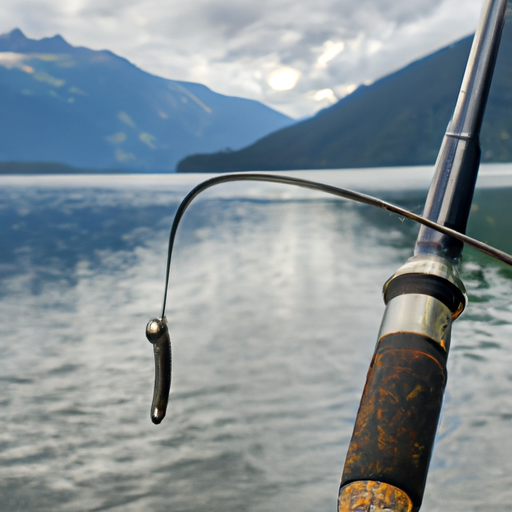If you are a beginner angler eager to learn the art of fishing, you might have come across various myths and misconceptions that can make your fishing journey confusing and overwhelming. However, fear not, as we are here to debunk the top 5 fishing myths that beginners often encounter. In this article, we will separate fact from fiction, helping you navigate the waters and improve your fishing skills with confidence. Say goodbye to outdated beliefs and hello to a successful angling experience as we debunk these fishing myths one by one!

Myth 1: You Need Expensive Equipment
Subheading 1: Quality vs. Price
One common misconception among beginners is that you need to invest in expensive equipment to enjoy fishing. However, the truth is that the quality of the equipment matters more than the price tag. While high-end gear may offer some additional features and durability, basic fishing gear can be just as effective, especially for beginners.
Subheading 2: Basic Gear is Sufficient
When starting out, it’s important to focus on the essentials. A simple fishing rod and reel combo, along with some basic fishing tackle, is more than enough to get you started. As you gain experience and develop your skills, you can gradually upgrade your equipment if you feel the need for it. Remember, catching fish is more about technique and knowledge rather than having the most expensive gear.
Subheading 3: Importance of Skills and Knowledge
No matter how high-tech or expensive your fishing equipment may be, it won’t guarantee success if you don’t have the necessary skills and knowledge. Understanding the local fishing regulations, learning about different fishing techniques, and being familiar with the behavior of your target fish species are far more important than the cost of your gear. Invest your time and effort in honing your fishing skills, and you’ll find that expensive equipment is not always a requirement for a successful fishing experience.
Myth 2: Fishing is Only for Men
Subheading 1: Fishing is for Everyone
Contrary to popular belief, fishing is not a hobby or sport exclusively for men. It is a recreational activity that can be enjoyed by people of all genders and ages. Fishing has no boundaries, and anyone can partake in this enjoyable pastime. It’s a perfect way to unwind, connect with nature, and spend quality time with family and friends, regardless of gender.
Subheading 2: Female Anglers Are Thriving
In recent years, there has been a significant increase in the number of female anglers, both recreational and professional. Women have been breaking barriers and excelling in the world of fishing, proving that it is not a male-dominated activity. Many organizations and clubs now actively promote and support women’s participation in fishing, creating an inclusive and diverse fishing community.
Subheading 3: The Diversity of Fishing
Fishing encompasses a wide range of techniques and styles, making it accessible and enjoyable for everyone. Whether it’s fly fishing, ice fishing, beach fishing, or kayak fishing, there are endless possibilities to explore. Fishing is not limited by gender; it is a versatile and inclusive activity that welcomes individuals from all walks of life.

Myth 3: Fishing is All About Luck
Subheading 1: Skill and Strategy
While luck may play a small role in fishing, it is primarily a game of skill and strategy. Successful anglers rely on their knowledge of fish behavior, understanding of the water conditions, and their ability to adapt to different situations. By learning and practicing various fishing techniques, observing fish habits, and analyzing environmental factors, you can increase your chances of catching fish significantly.
Subheading 2: Understanding Fish Behavior
To become a proficient angler, it is essential to study and understand the behavior of the fish you are targeting. Fish have specific feeding patterns, preferred habitats, and preferences for certain types of bait. By learning about the biology and habits of your target species, you can strategically plan your fishing trips and increase your chances of success.
Subheading 3: Research and Preparation
Preparing for a fishing trip involves more than just grabbing your gear and heading to the nearest body of water. Researching the location, studying the weather conditions, and planning your fishing approach can greatly enhance your fishing experience. Keeping track of fishing reports, consulting with local anglers, and understanding seasonal patterns can give you an advantage and improve your fishing outcomes.
Myth 4: Fishing is Just Sitting Around
Subheading 1: Active and Engaging Sport
Contrary to popular belief, fishing is not just about sitting around and waiting for fish to bite. It can be an active and engaging sport that requires physical and mental involvement. From casting your line, reeling in your catch, to maneuvering a kayak or canoe, fishing involves various movements and techniques that keep you physically active and engaged throughout the experience.
Subheading 2: Different Fishing Techniques
There is a wide range of fishing techniques that can make your fishing adventures more exciting and dynamic. Whether you enjoy trolling, jigging, or casting, each technique requires specific skills and techniques that keep you engaged and challenged. Experimenting with different techniques can add a new layer of excitement and fulfillment to your fishing endeavors.
Subheading 3: Physical and Mental Benefits
Fishing offers several physical and mental health benefits. It allows you to connect with nature, relieving stress and promoting relaxation. Additionally, the physical activities involved in fishing, such as casting, reeling, and wading, can provide a low-impact workout. Spending time outdoors also exposes you to vitamin D, which is essential for maintaining healthy bones and boosting your immune system.

Myth 5: You Need to Fish Early in the Morning
Subheading 1: Factors Influencing Fish Activity
While fishing early in the morning can be productive, it is not the only time when fish are active. Fish behave differently depending on various factors such as water temperature, weather conditions, and even the moon phase. Understanding these factors can help you determine the best time to fish, regardless of whether it is early morning, midday, or dusk.
Subheading 2: The Right Time to Fish
Deciding when to fish largely depends on the specific fish species you are targeting. Certain species may be more active during specific times of the day or certain seasons. Researching the behavior patterns of your target species and consulting local anglers or fishing guides can provide valuable insights on the best time to fish for optimal chances of success.
Subheading 3: Adapting to Different Conditions
Adaptability is key in fishing. If the fish are not biting during your regular fishing hours, it may be necessary to change your strategy and adapt to the changing conditions. Being open to experimenting with different fishing techniques, using different baits or lures, and exploring different fishing spots can help you maximize your chances of catching fish, regardless of the time of day.
Myth 6: You Should Always Use Live Bait
Subheading 1: The Versatility of Artificial Lures
While live bait can be effective in certain situations, artificial lures offer great versatility and can be just as successful. Artificial lures come in a wide range of colors, shapes, and sizes, mimicking various prey items that fish commonly feed on. They can be used in both freshwater and saltwater fishing, making them a convenient and cost-effective alternative to live bait.
Subheading 2: Benefits of Using Artificial Baits
Using artificial baits allows you to cover more fishing ground and target a wider range of fish species. They are also more durable and can withstand multiple casts and retrieves, unlike live bait, which can be easily damaged or lost. Additionally, artificial lures can be used year-round, regardless of the availability or suitability of live bait, making them a reliable option for anglers of all levels.
Subheading 3: Matching the Conditions and Species
The choice between live bait and artificial lures depends on various factors, such as the target species, water conditions, and personal preference. Some fish species may be more attracted to live bait, while others may be more responsive to artificial lures. Experimenting with different baits and observing the fish’s behavior can help you determine the most effective approach for each fishing scenario.

Myth 7: Fishing is Harmful to Fish Populations
Subheading 1: Responsible Catch and Release Practices
Sustainable fishing practices prioritize the health and conservation of fish populations. Catch and release practices allow anglers to enjoy fishing while minimizing the impact on fish populations. By following proper handling techniques and using barbless hooks and non-invasive fishing methods, anglers can release their catch safely, ensuring its chances of survival and contributing to the overall well-being of fish populations.
Subheading 2: Conservation Initiatives
Numerous organizations and agencies are dedicated to conserving fish populations and their habitats. From implementing size and bag limits to creating marine protected areas, these initiatives aim to sustainably manage fisheries and protect fish populations from overexploitation. Supporting and participating in these conservation efforts ensures that fishing remains a sustainable activity for future generations to enjoy.
Subheading 3: Sustainable Fishing Methods
Adopting sustainable fishing methods can help minimize the impact on fish populations and their habitats. Using circle hooks, which reduce the chances of deep hooking and injury, and practicing proper fish handling and release techniques are examples of sustainable fishing practices. Furthermore, staying informed about local fishing regulations and adhering to catch limits and seasonal restrictions are essential steps in maintaining a healthy balance between fishing and conservation.
Myth 8: You Need to Fish in Deep Water
Subheading 1: Fish Habitat and Behavior
Fish species have specific habitat preferences and behaviors. While some species may inhabit deep waters, others thrive in shallow or nearshore areas. Understanding the habitat and behavior patterns of your target fish species can help you determine the best fishing spots and water depths to focus on. It is essential to research and identify the preferred environment of your target species to increase your chances of success.
Subheading 2: Understanding Shallow Water Fishing
Shallow water fishing can be incredibly productive, especially when targeting certain species such as bass or trout. Many predatory fish species, including pike and redfish, often patrol the shallows in search of food. By mastering shallow water fishing techniques, such as sight fishing or casting along structure and vegetation, you can unlock a whole new realm of fishing opportunities.
Subheading 3: Adapting to Different Water Levels
Fishing can be adapted to various water levels, whether it’s fishing in deep or shallow water. Fish behavior changes with water levels, and understanding these changes can improve your chances of catching fish. Adapting your fishing techniques, adjusting your bait presentation, and targeting specific areas based on the water level can help you overcome the misconception that fishing only in deep water yields successful results.

Myth 9: You Should Always Use Big Hooks
Subheading 1: Matching the Hook Size to the Bait
Matching the hook size to the bait is crucial for effectively hooking and landing fish. While using big hooks may be suitable for larger baits and target species, it is not always necessary. Downsizing your hook to match the size of the bait can make your presentation more natural and increase your chances of enticing fish to bite. Additionally, smaller hooks may be more suitable for targeting certain fish species that have smaller mouths.
Subheading 2: Consideration of Targeted Fish Species
Different fish species have varying mouth sizes and feeding behaviors. Understanding the characteristics of your target species can help you determine the appropriate hook size. For example, when targeting panfish or trout, which have relatively smaller mouths, using smaller hooks can increase your hooking efficiency while reducing the risk of deep hooking or gut-hooking.
Subheading 3: Balancing Hook Size for Hooking Efficiency
Finding the right balance in hook size is essential for hooking efficiency. Using hooks that are too large may increase the likelihood of fish detecting the hook and becoming hesitant to bite. On the other hand, using hooks that are too small can result in missed hooksets or an increased risk of the hook pulling out during the fight. Experimenting with different hook sizes and considering the target species can help you find the optimal hook size for each fishing situation.
Myth 10: Fishing is Expensive
Subheading 1: Cost-Effective Fishing Options
Fishing can be enjoyed on any budget, and there are numerous cost-effective options available. Instead of investing in high-end equipment, beginners can start with affordable but reliable gear. Many entry-level fishing rods and reels offer excellent performance at a fraction of the cost of top-tier equipment. Additionally, there are affordable alternatives to live bait, such as artificial lures or even using natural baits like worms or corn.
Subheading 2: Budget-Friendly Tips and Tricks
There are plenty of budget-friendly tips and tricks to make fishing more affordable. Rather than purchasing expensive tackle, consider making your own rigs or lures. Opting for fishing from the shore or public fishing spots can eliminate the need for expensive boat rentals. Shopping for fishing gear during sales or using second-hand equipment can also help reduce costs without compromising the overall fishing experience.
Subheading 3: Embracing the DIY Aspect of Fishing
Fishing is not just a hobby; it can also be a rewarding do-it-yourself (DIY) activity. Making your fishing tackle, such as tying your own flies or creating your own fishing rigs, can be both cost-effective and enjoyable. DIY fishing projects allow you to personalize your gear and develop a deeper connection with the sport. Embracing the DIY aspect of fishing can not only save you money but also enhance your overall fishing experience.
In conclusion, debunking these common fishing myths showcases the accessibility, inclusivity, and affordability of fishing as a recreational activity. Understanding that you don’t need expensive equipment, fishing is for everyone regardless of gender, skill and strategy trump luck, fishing is an active and engaging sport, and fishing can be enjoyed at various times of the day are essential for beginners embarking on their fishing journey. Additionally, exploring different bait options, practicing responsible catch and release, adapting to different water depths, and matching hook sizes to the bait and species further enhance the fishing experience. Lastly, debunking the myth that fishing is expensive highlights the range of budget-friendly options and the opportunity to embrace the DIY aspect of fishing. So grab your gear, learn the skills, and embark on a fishing adventure full of joy, relaxation, and the thrill of landing your catch!





